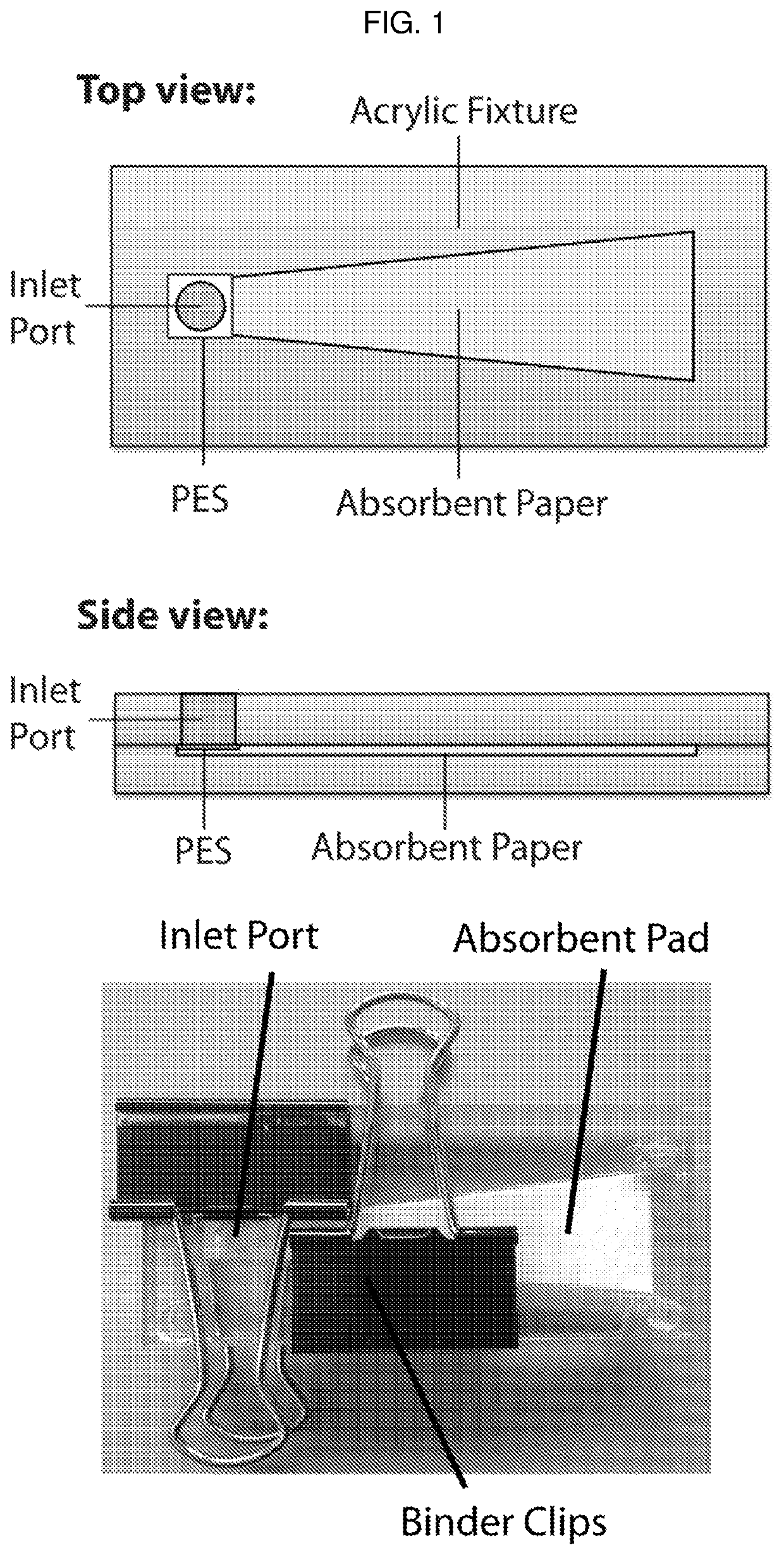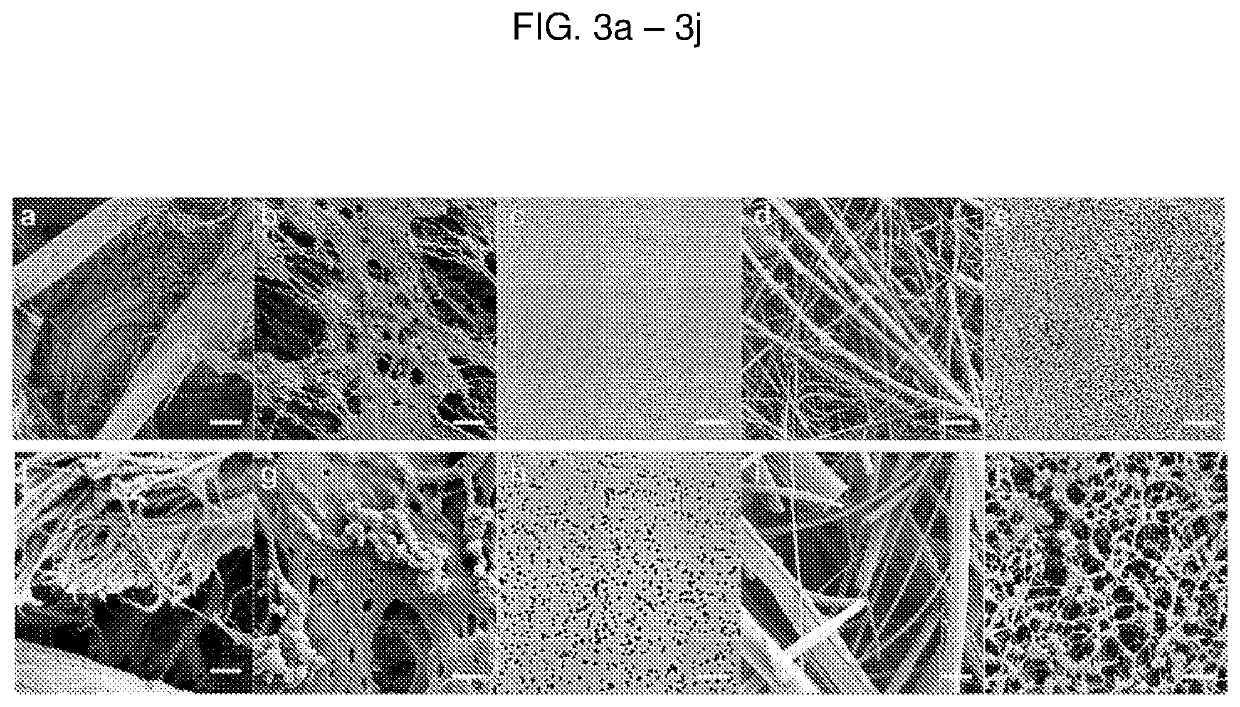Detection device having capture region and detection region
a detection device and detection region technology, applied in biochemistry apparatus and processes, laboratory glassware, instruments, etc., can solve the problems of cervical cancer development, high labor intensity, and inability to provide established laboratory and sample transportation infrastructure, and achieve simple, rapid molecular diagnostic platform, and immediate visual readout
- Summary
- Abstract
- Description
- Claims
- Application Information
AI Technical Summary
Benefits of technology
Problems solved by technology
Method used
Image
Examples
example 1
Point of Care Nucleic Acid Amplification Testing
[0111]Nucleic acid amplification testing (NAAT) involves three main steps: (i) sample preparation, which involves sample lysis and nucleic acid extraction and purification, (ii) amplification of the extracted nucleic acids of interest to detectable copy numbers, and (iii) detection of the amplified products.
[0112]A. Sample Preparation
[0113]Sample preparation entails cell lysis and nucleic acid extraction steps, and has traditionally been a challenge in nucleic acid testing especially for POC applications because it involves lengthy, manual processes that often require expensive instrumentation, including centrifugation, extraction, and concentration of target nucleic acids to reach suitably low limits of detection. Single-step lysis, alcohol precipitation, and solid phase extraction processes known in the art utilize glycogen carrier particles to increase the effective hydrodynamic radius of precipitated nucleic acid aggregates.
[0114]S...
example 2
Material Characterization and Optimization
[0122]Example 2 provides a systematic comparison of various capture region materials of the invention, including physical characterizations, nucleic acid amplification efficiencies, and implications thereof.
[0123]A. Materials and Methods
[0124]Paper membranes were chosen for analysis based on their use in either cell filtration, nucleic acid capture, or current point-of-care diagnostics. Paper samples used in this study were 3MM Chr cellulose (CHR), 0.22 μm polyethersulfone (PES), 0.2 μm track etched polycarbonate (PC), 1.6 μm binder-free glass microfiber (GF), and 0.45 μm nitrocellulose (NC). CHR, GF, and NC were purchased from GE Healthcare (Pittsburgh, Pa.), catalog numbers 3MM CHR (3030861), GF / F (1825-090), and Protran BA85 (10402506), respectively. PES and PC were purchased from Millipore EMD (Billerica, Mass.), catalog numbers GPWP04700 and GTTP14250, respectively.
[0125]SEM
[0126]Scanning electron microscopy (SEM) was performed using a ...
example 3
Device
[0199]Example 3 demonstrates the construction and functionality of a device of the invention by implementing an HPV 16 DNA extraction, amplification, and detection assay directly from patient cervical samples. This on-chip HPV 16 assay addresses many of the limitations of conventional cytology by providing highly sensitive molecular level information regarding the presence of high-risk HPV 16 in cervical samples without the need for laboratory infrastructure or highly trained pathologists.
[0200]A. Materials and Methods
[0201]Human Papillomavirus 16 Cloned DNA Standards
[0202]Human Papillomavirus 16 (HPV 16) DNA standards were generated by cloning the E7 gene for HPV 16 into the pGEM-T Easy Vector (Promega, Madison, Wis.). The E7 gene was PCR amplified from HPV-16 transformed cell DNA (Advanced Biotechnologies, Inc, Eldersburg, Md.) with gene-specific forward and reverse cloning primers (Table 2) containing restriction endonuclease sequences SpeI and AatlI, respectively, using th...
PUM
| Property | Measurement | Unit |
|---|---|---|
| temperature | aaaaa | aaaaa |
| temperature | aaaaa | aaaaa |
| temperature | aaaaa | aaaaa |
Abstract
Description
Claims
Application Information
 Login to View More
Login to View More - R&D
- Intellectual Property
- Life Sciences
- Materials
- Tech Scout
- Unparalleled Data Quality
- Higher Quality Content
- 60% Fewer Hallucinations
Browse by: Latest US Patents, China's latest patents, Technical Efficacy Thesaurus, Application Domain, Technology Topic, Popular Technical Reports.
© 2025 PatSnap. All rights reserved.Legal|Privacy policy|Modern Slavery Act Transparency Statement|Sitemap|About US| Contact US: help@patsnap.com



